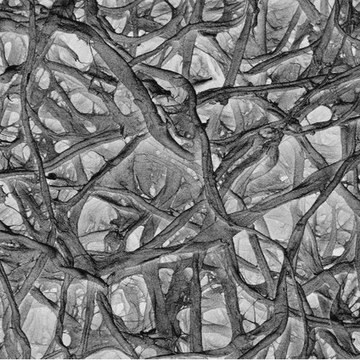MABS1220
Anti-LTP/CETP Antibody, clone 14–8F
clone 14-8F, from mouse
Sinónimos:
Cholesteryl ester transfer protein, CETP, Lipid transfer protein I, LTP
About This Item
Productos recomendados
origen biológico
mouse
Nivel de calidad
forma del anticuerpo
purified immunoglobulin
tipo de anticuerpo
primary antibodies
clon
14-8F, monoclonal
reactividad de especies
mouse, human, rabbit
técnicas
ELISA: suitable
western blot: suitable
isotipo
IgG2aκ
Nº de acceso UniProt
Condiciones de envío
wet ice
modificación del objetivo postraduccional
unmodified
Información sobre el gen
human ... CETP(1071)
Descripción general
Especificidad
Inmunógeno
Aplicación
ELISA Analysis: A representative lot was conjugated with HRP and used as the detection antibody in combination with clone 3-11D (Cat. No. MABS1219) as the capture antibody for the detection of mouse plasma LTP/CETP by sandwich ELISA (Wu, C.A., et al. (2002). Arterioscler .Thromb. Vasc. Biol. 22(8):1347-1353).
ELISA Analysis: A representative lot, when conjugated with HRP and used as the detection antibody, showed pH-dependent LTP/CETP-binding activity with the maximum reactivity at a weakly acidic condition of pH 5 to 5.5 in sandwich ELISA applications (Saito, K., et al. J. Lipid Res. (1999). 40(11):2013-2021).
Western Blotting Analysis: A representative lot detected both rabbit and human LTP/CETP by Western blotting under either reducing or non-reducing condition (Ko, K.W., et al. (1994). J. Biol. Chem. 269(45):28206-28213).
Inhibits Activity/Function: A representative lot inhibited both rabbit and human LTP/CETP-mediated triglyceride (TG), but not cholesteryl ester (CE), transfer from low density lipoprotein (LDL) to high density lipoprotein (HDL) (Ko, K.W., et al. (1994). J. Biol. Chem. 269(45):28206-28213).
Inhibits Activity/Function: A representative lot effectively inhibited human LTP/CETP-mediated triglyceride (TG) transfer from high density lipoprotein (HDL) to to apoB-containing lipoproteins in human plasma. Clone 14-8F (14-8H) also inhibited cholesteryl ester (CE) transfer in the same assay by 40% (Ko, K.W., et al. (1994). J. Biol. Chem. 269(45):28206-28213).
Signaling
Lipid Metabolism & Weight Regulation
Calidad
Western Blotting Analysis: 0.5 µg/mL of this antibody detected purified human plasma LTP/CETP.
Descripción de destino
Forma física
Almacenamiento y estabilidad
Otras notas
Cláusula de descargo de responsabilidad
¿No encuentra el producto adecuado?
Pruebe nuestro Herramienta de selección de productos.
Código de clase de almacenamiento
12 - Non Combustible Liquids
Clase de riesgo para el agua (WGK)
WGK 1
Punto de inflamabilidad (°F)
Not applicable
Punto de inflamabilidad (°C)
Not applicable
Certificados de análisis (COA)
Busque Certificados de análisis (COA) introduciendo el número de lote del producto. Los números de lote se encuentran en la etiqueta del producto después de las palabras «Lot» o «Batch»
¿Ya tiene este producto?
Encuentre la documentación para los productos que ha comprado recientemente en la Biblioteca de documentos.
Nuestro equipo de científicos tiene experiencia en todas las áreas de investigación: Ciencias de la vida, Ciencia de los materiales, Síntesis química, Cromatografía, Analítica y muchas otras.
Póngase en contacto con el Servicio técnico